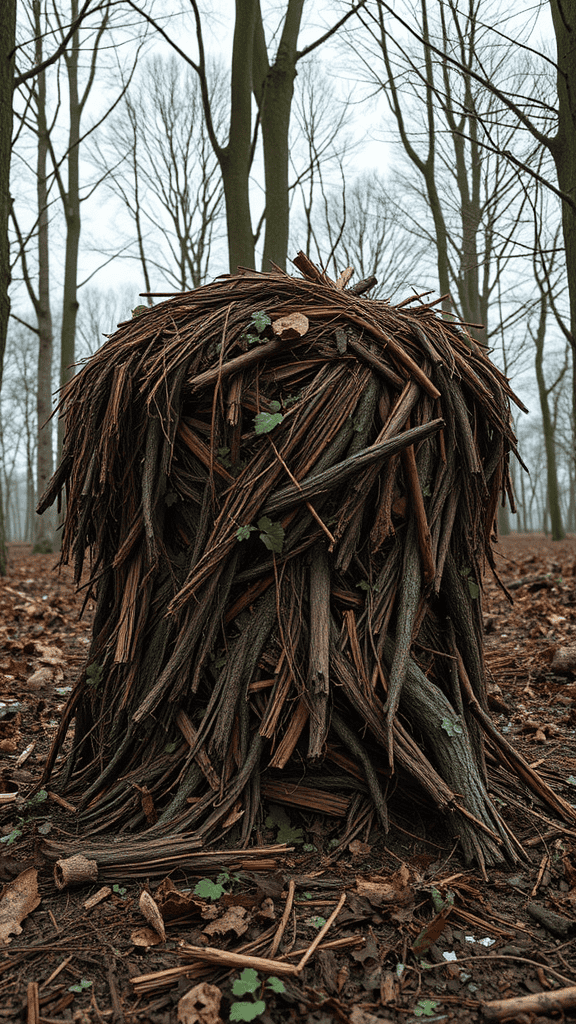Can You Compost Tree Waste? Benefits and Best Practices
Composting is a smart way to reduce waste and enrich your garden soil. If you’ve recently trimmed trees or had tree work done, you might wonder, can you compost tree waste? The answer is yes! Composting tree waste can offer numerous benefits and is a valuable practice for any gardener or homeowner. Let’s delve into why it’s a good idea and how you can do it effectively.
Benefits of Composting Tree Waste
Composting tree waste has several advantages that can significantly enhance your gardening efforts:
- Reduces Waste: Composting helps divert organic waste from landfills, cutting down on overall waste. This is especially important for large pieces like branches and leaves that take a long time to decompose in a landfill setting.
- Improves Soil Structure: Tree waste adds essential nutrients to your soil, improving its structure and helping retain moisture. This is particularly beneficial for sandy or clay-heavy soils.
- Encourages Beneficial Organisms: Composting attracts earthworms and other beneficial organisms that aerate the soil and contribute to its health.
- Cost-Effective: By composting your tree waste, you reduce the need for store-bought fertilizers and soil amendments. You create nutrient-rich compost for free!
- Eco-Friendly: Composting tree waste is an environmentally friendly process that contributes to a sustainable ecosystem.
Types of Tree Waste Suitable for Composting
Not all tree waste is suitable for composting. However, many parts can be effectively transformed into compost:
- Leaves: Fallen leaves are rich in carbon and decompose well. They can form a substantial part of your compost pile.
- Small Branches: Branches that are about one inch thick are great for composting. Shredding them into smaller pieces can speed up the decomposition process.
- Bark: Tree bark can also be composted. It might take longer to break down, but it still contributes valuable nutrients.
- Fruit and Nut Remnants: If you prune fruit or nut trees, leftover fruit and nuts can also be added. They break down quickly and enrich your compost.
Best Practices for Composting Tree Waste
To ensure that you are composting tree waste effectively, follow these best practices:
- Shred or Chop: Larger pieces of tree waste take much longer to decompose. Shredding or chopping these into smaller pieces enhances airflow and speeds up the decomposition process.
- Balance Greens and Browns: Maintain a good carbon-to-nitrogen ratio in your compost heap. Tree waste provides carbon (brown material), so add green materials like kitchen scraps to balance it out.
- Monitor Moisture Levels: Compost should be moist but not soggy. If your compost pile is too dry, add water; if it’s too wet, turn it and add more brown material.
- Turn the Pile Regularly: Turning your compost pile every few weeks keeps it aerated and accelerates decomposition. This helps break down tree waste quickly.
- Be Patient: Composting takes time. Depending on conditions, it can take several months for tree waste to break down completely. Patience is essential!
What to Avoid Composting
While many types of tree waste are compostable, some materials should be avoided to prevent potential issues:
- Diseased Plants: Adding diseased tree waste can introduce pathogens into your compost.
- Walnut Trees: Parts of walnut trees contain compounds that can inhibit the growth of other plants.
- Wood Ash: While technically compostable, it should be used sparingly as it can raise the pH of your compost.
By understanding whether you can compost tree waste and following best practices, you can help the environment and improve your garden. So, the next time you prune your trees, think about composting that waste rather than tossing it out. It’s a simple yet effective way to make a positive impact while enjoying the benefits of rich, homemade compost.
Creative Ways to Utilize Tree Waste in Your Garden
Tree waste can be an excellent resource for your garden, allowing you to reduce waste while enhancing the beauty and health of your green space. Many gardeners look for ways to creatively utilize leftover branches, leaves, and bark. Here are some innovative ideas to transform tree waste into valuable elements for your garden.
Mulch for Your Flower Beds
Shredding tree bark and leaves creates a nutrient-rich mulch that helps retain moisture in the soil. This benefits your plants by providing a consistent water source, especially during dry spells. Additionally, mulch can suppress weeds, minimizing the work needed to maintain your garden beds.
Compost Enrichment
If you have fallen branches and leaves, they can be added to your compost pile. Here’s how to do it:
- Brown Materials: Dried leaves make an excellent “brown” component in compost, balancing out nitrogen-rich “green” materials like kitchen scraps.
- Small Branches: Chop branches into smaller pieces to accelerate decomposition.
Using tree waste in compost not only reduces landfill waste but also enriches your garden soil with essential nutrients.
Creating Natural Pathways
Break down larger branches and logs into pieces to create natural pathways in your garden. These paths can serve as functional walkways while giving your garden a rustic, woodland feel. Plus, they can help prevent mud and erosion in high-traffic areas.
Building Raised Garden Beds
Use large tree trunks or sections of wood to create raised garden beds. Not only do these beds look appealing, but they also provide excellent drainage and can help preserve soil warmth. Simply stack the tree sections to form a rectangular frame and fill it with soil, compost, and your chosen plants.
Furniture and Trellises
Get creative and build unique garden furniture or trellises from tree waste. For instance, sturdy branches can be fashioned into benches or tables. Meanwhile, thinner branches can be woven together to create rustic trellises for climbing plants like peas and beans. Not only does this save money, but it also allows you to display your DIY skills!
Wildlife Habitat
Leave some larger branches or logs in a corner of your garden to create a natural habitat for wildlife. Dead wood provides shelter for insects, birds, and small mammals. It’s an easy and eco-friendly way to encourage biodiversity in your garden, supporting the ecosystem surrounding your space.
Wood Chips for Drainage
If you have access to wood chips from tree trimming, consider using them in areas that require better drainage. Wood chips can be spread in flower beds, around trees, or in pathways to improve soil aeration. As they break down over time, they also add nutrients back into the soil.
Craft Projects
Engage your creativity by using smaller tree waste for craft projects. Here are some ideas:
- Decorative Pieces: Create ornaments or seasonal decorations using twigs and smaller branches.
- Garden Markers: Cut logs into small rounds and use them as plant markers.
These projects not only keep your hands busy but also personalize your garden space.
Tree Waste for Firewood
If the tree waste is substantial and hardwood, consider using it as firewood for your fireplace or outdoor fire pit. Seasoned wood provides excellent heat and adds a cozy atmosphere to your gathering places. Make sure to store it in a dry area to ensure it burns well.
Finding innovative ways to utilize tree waste can significantly benefit your garden while promoting environmental sustainability. From composting to crafting, there’s no limit to how you can transform what once seemed like waste into a beautiful and functional part of your outdoor space. Embrace your creativity and let tree waste work for you!
Conclusion
Considering the advantages and best practices for composting tree waste, it’s clear that you can effectively include it in your compost pile. By turning branches, leaves, and other woody materials into nutrient-rich compost, you can reduce waste while enriching your garden soil. The composting process not only supports environmental sustainability but also contributes to vibrant plant growth.
Moreover, tree waste offers unique opportunities for creative gardening solutions. From using hardwood chips as mulch to creating rustic garden art, there are many ways to repurpose this material. Implementing these aspects can enhance the visual appeal of your outdoor space while maximizing the resources you have on hand.
Tree waste into your gardening routine encourages a more sustainable approach to yard maintenance. Whether you choose to compost or creatively reuse tree waste, you are making a positive impact on the environment and cultivating a healthier garden. Start thinking outside the box; the next time you prune your trees or gather fallen branches, remember that what may seem like waste can become a valuable resource. Embrace these practices for a greener home and garden, and enjoy the benefits that come from utilizing every part of your landscape sustainably.
As an Amazon Associate, I earn from qualifying purchases.

